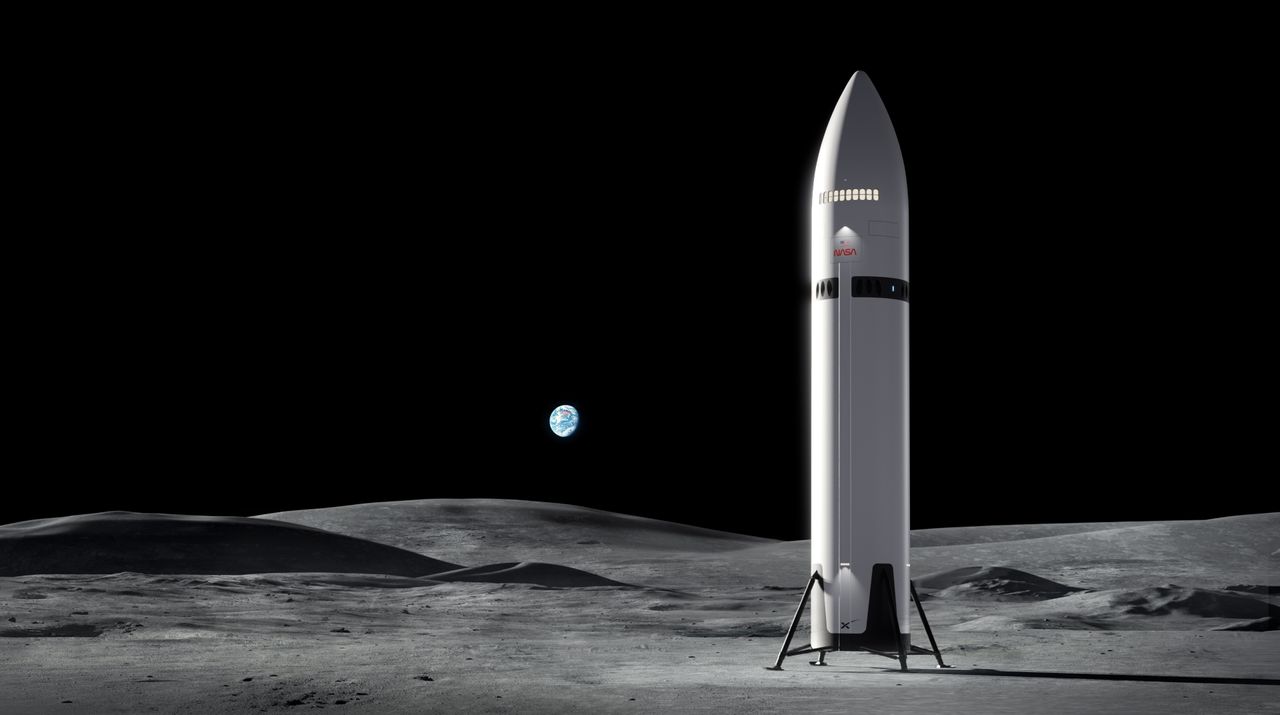Science
NASA Considers Alternatives as SpaceX Falls Behind on Artemis 3

NASA is reevaluating its partnership with SpaceX for the Artemis 3 mission, the first crewed moon landing in over 50 years, due to concerns about the company’s development timeline. In a statement made on October 20, Acting Administrator Sean Duffy expressed dissatisfaction with SpaceX’s progress on the lunar lander, which was awarded a contract worth $2.9 billion in April 2021.
The lunar lander, a modified upper stage of SpaceX’s Starship megarocket, is critical for transporting astronauts to the lunar surface. Duffy indicated that delays in the Starship program and other challenges have prompted NASA to consider opening up the contract to other competitors, including Blue Origin, the space company founded by Jeff Bezos.
NASA’s Shift in Strategy
During an interview on CNBC’s “Squawk Box,” Duffy emphasized the urgency of meeting mission timelines, stating, “I love SpaceX; it’s an amazing company. The problem is, they’re behind. They’ve pushed their timelines out, and we’re in a race against China.” He added that the Biden administration aims to achieve a moon landing within the current president’s term, which influences NASA’s decision to allow other companies to compete for the contract.
Blue Origin, which secured a separate Artemis Human Landing System contract worth $3.4 billion in 2023, is developing its own lunar lander, the Blue Moon. Although the company intends to be ready for a crewed mission, Musk has expressed skepticism regarding Blue Origin’s ability to meet the timeline, citing its lack of successful payload deliveries to orbit.
Delays and Future Plans
The timeline for the Artemis 3 mission has faced multiple shifts over the past few years, initially targeting a launch in late 2024. This date was subsequently postponed to 2025, then to September 2026, and most recently to mid-2027. Duffy suggested during the interview that a new target could be set for 2028.
NASA has already conducted the successful Artemis 1 mission, which saw an uncrewed Orion spacecraft launch and return from lunar orbit in late 2022. The agency is preparing for Artemis 2, scheduled to carry four astronauts on a 10-day mission around the moon as early as February 2024.
As SpaceX continues to work on its Starship program, which has completed 11 suborbital test flights to date, NASA’s competitive approach may accelerate the development of lunar landers. Duffy also noted China’s ambitious plans to land astronauts on the moon by 2030, highlighting the global space race.
With no humans having walked on the lunar surface since the Apollo 17 mission in December 1972, the upcoming Artemis missions represent a significant step forward in human space exploration. The outcome of NASA’s decision regarding the Artemis 3 contract could reshape the future of lunar exploration and the partnerships involved in it.
-

 Health4 days ago
Health4 days agoRare Brain Condition Discovered More Common in New Mexico
-

 Politics5 days ago
Politics5 days agoPrince Andrew Steps Back from Royal Duties Following Epstein Memoir
-

 Health5 days ago
Health5 days agoRemembering Mary Ingleby: A Life of Love, Teaching, and Music
-

 Sports5 days ago
Sports5 days agoMLS Decision Day 2025: Playoff Spots on the Line as Teams Clash
-

 Science5 days ago
Science5 days agoIdaho State University Launches Haunted Science Laboratory on Oct. 25
-

 World5 days ago
World5 days agoYoung Driver Dies in Collision with Box Truck in El Cajon
-

 Lifestyle5 days ago
Lifestyle5 days agoKent Hamilton Named Southeastern Farmer of the Year at Expo
-

 Entertainment5 days ago
Entertainment5 days agoTrump Commutes George Santos’ Sentence, Sparks Controversy
-

 Politics5 days ago
Politics5 days agoNavy Veteran Max Quattromani Launches Campaign for Assessor Seat
-

 Sports5 days ago
Sports5 days agoSaquon Barkley Reacts to James Franklin’s Dismissal from Penn State
-

 Business5 days ago
Business5 days agoFirst National Bank of Groton’s Quiet Period Ends October 21
-

 World5 days ago
World5 days agoNevada Treasury Awards 2025 Kenny C. Guinn Memorial Scholarships









